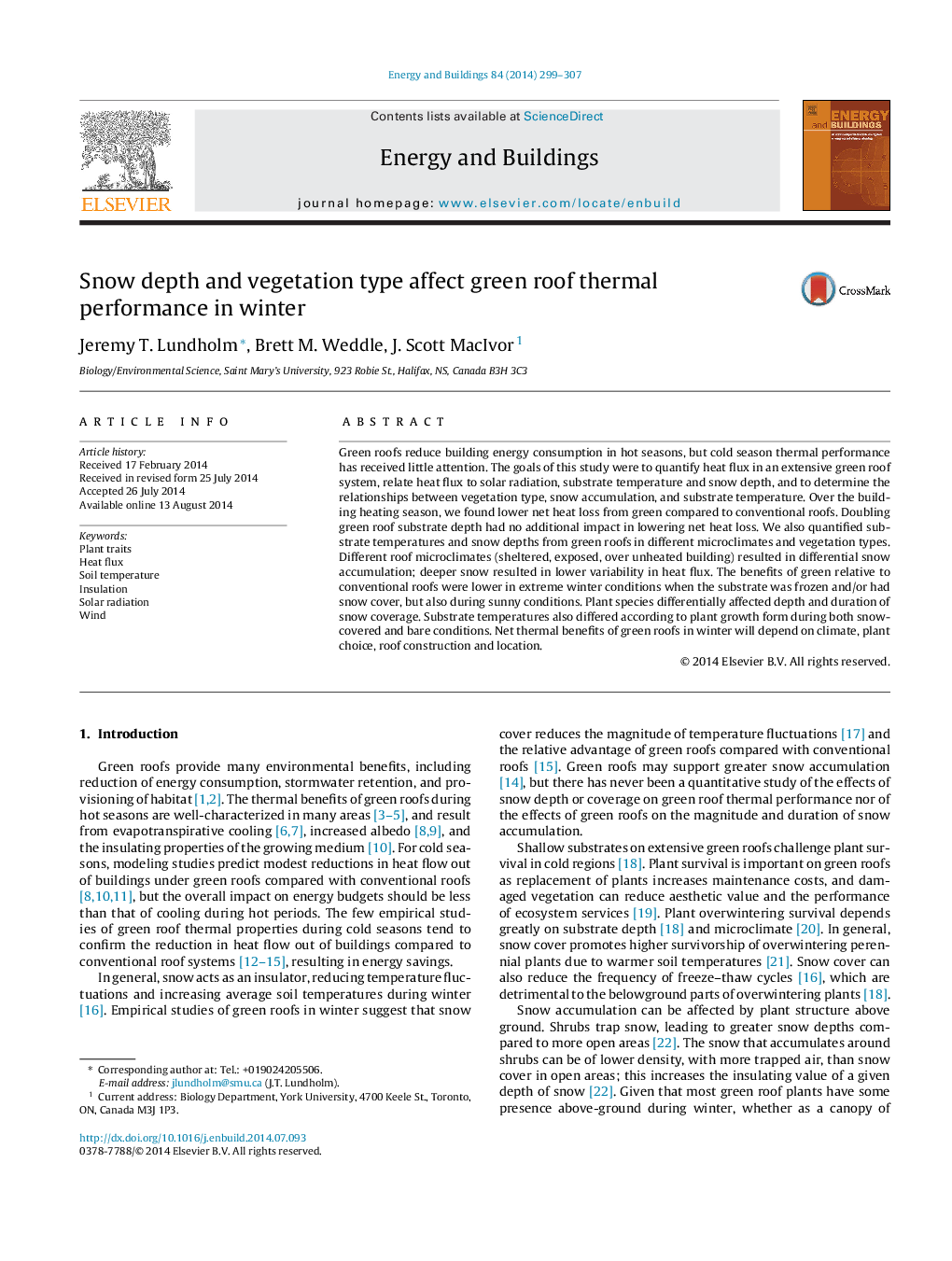| کد مقاله | کد نشریه | سال انتشار | مقاله انگلیسی | نسخه تمام متن |
|---|---|---|---|---|
| 262882 | 504052 | 2014 | 9 صفحه PDF | دانلود رایگان |
• Green roofs saved energy compared with conventional roofs in winter.
• Plant type and exposure affected snow accumulation.
• Deeper snow led to higher substrate temperatures, indicating greater energy savings.
• Plants can negatively affect winter performance by preventing solar heat gain.
Green roofs reduce building energy consumption in hot seasons, but cold season thermal performance has received little attention. The goals of this study were to quantify heat flux in an extensive green roof system, relate heat flux to solar radiation, substrate temperature and snow depth, and to determine the relationships between vegetation type, snow accumulation, and substrate temperature. Over the building heating season, we found lower net heat loss from green compared to conventional roofs. Doubling green roof substrate depth had no additional impact in lowering net heat loss. We also quantified substrate temperatures and snow depths from green roofs in different microclimates and vegetation types. Different roof microclimates (sheltered, exposed, over unheated building) resulted in differential snow accumulation; deeper snow resulted in lower variability in heat flux. The benefits of green relative to conventional roofs were lower in extreme winter conditions when the substrate was frozen and/or had snow cover, but also during sunny conditions. Plant species differentially affected depth and duration of snow coverage. Substrate temperatures also differed according to plant growth form during both snow-covered and bare conditions. Net thermal benefits of green roofs in winter will depend on climate, plant choice, roof construction and location.
Figure optionsDownload as PowerPoint slide
Journal: Energy and Buildings - Volume 84, December 2014, Pages 299–307
